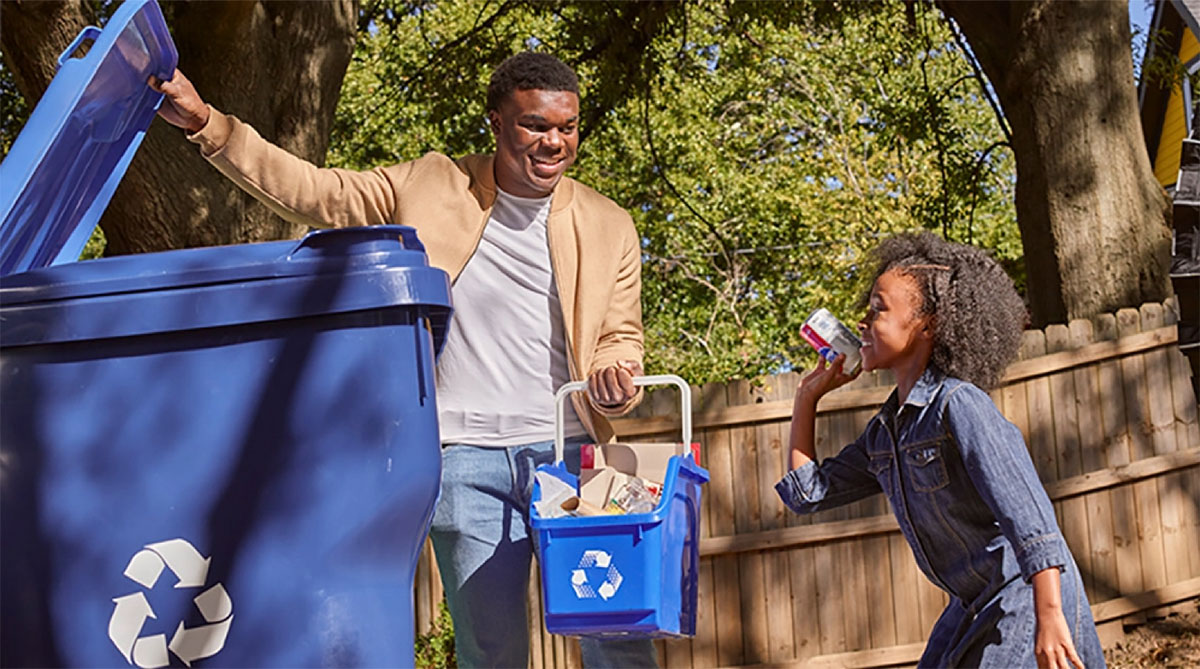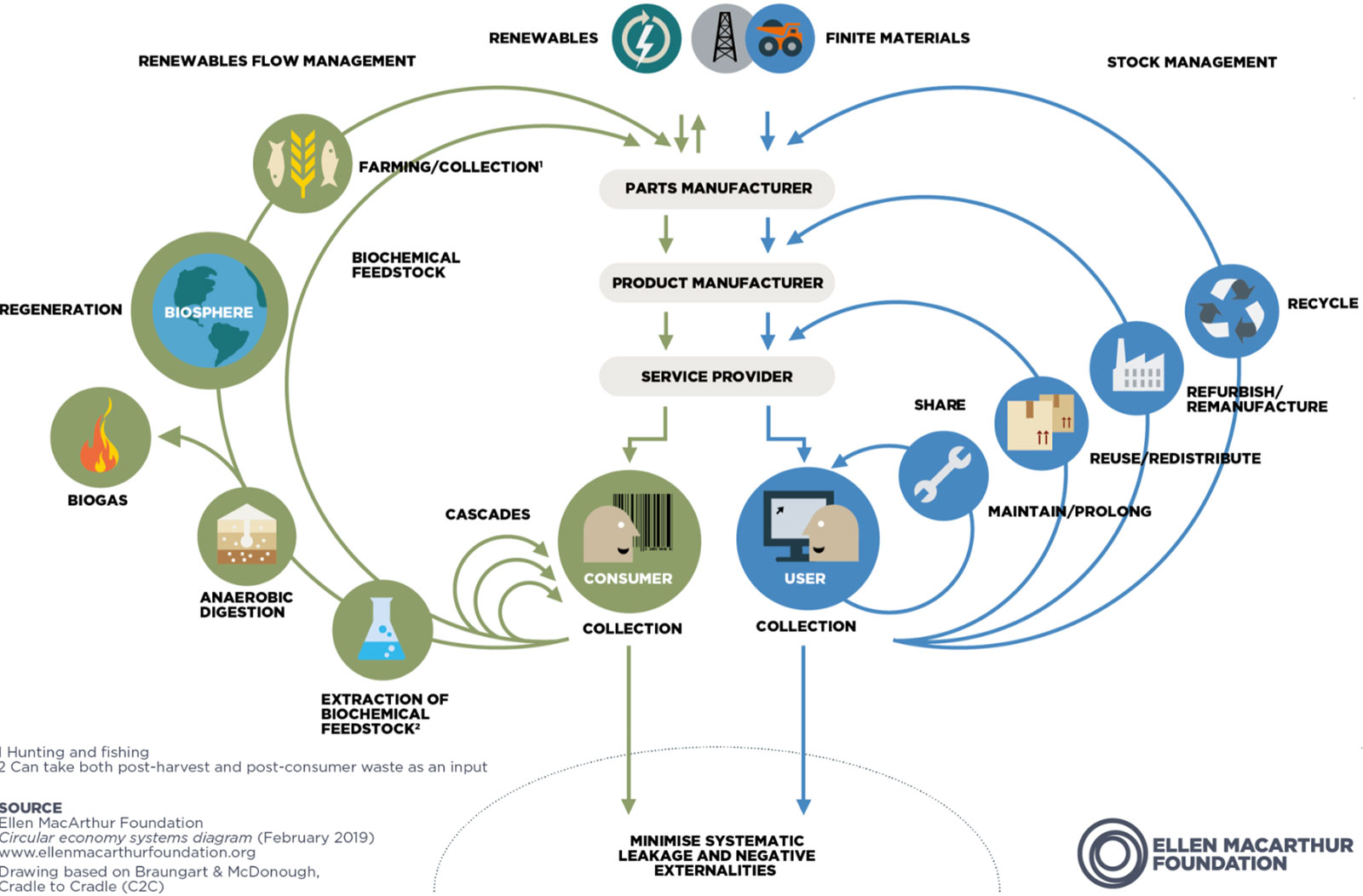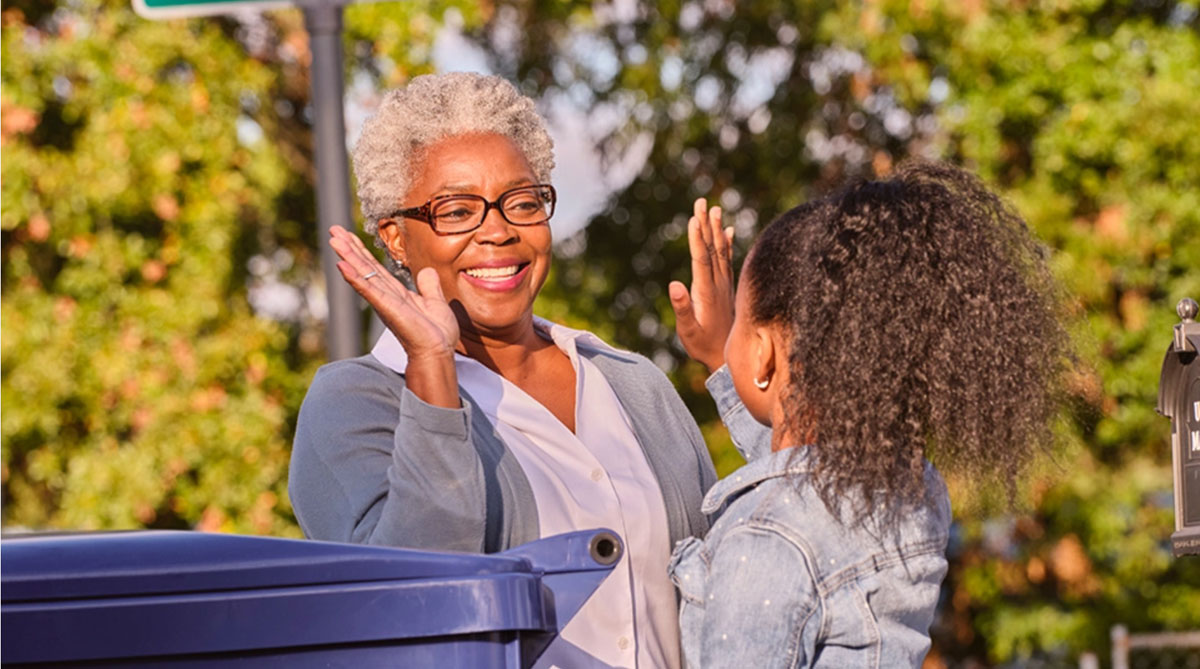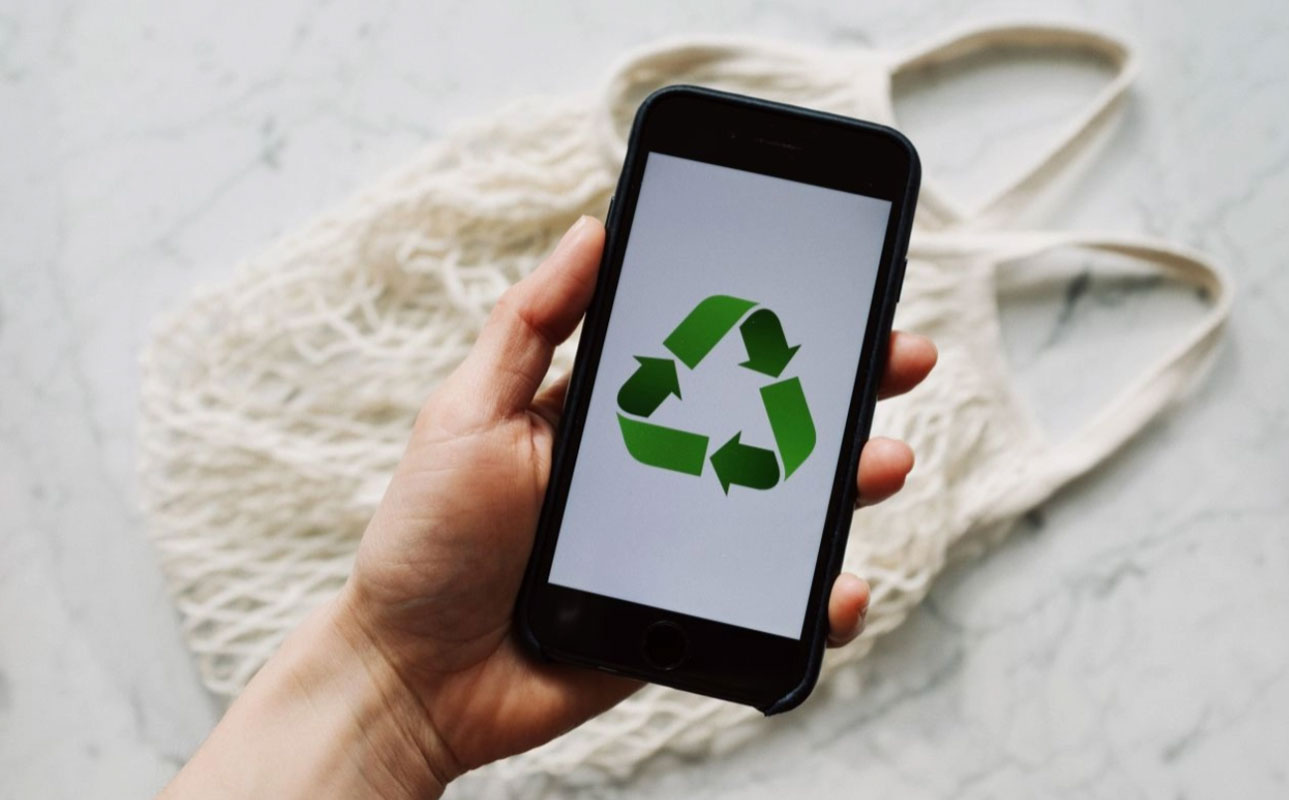
Circular Packaging 101
TABLE OF CONTENTS
Use the links below to navigate this guide.
What is Circular Packaging?
Circular packaging is focused on the reduction and extended use of virgin materials to more sustainably package the products consumers use every day. Circular packaging puts the focus on:
- The reduction of overall packaging
- Making packaging recyclable or compostable
- Creating packaging from post-consumer recycled materials
- Making packaging reusable
Circular packaging fits perfectly into the idea of a circular economy, which the EPA defines as one that “reduces material use, redesigns materials, products, and services to be less resource intensive, and recaptures ‘waste’ as a resource to manufacture new materials and products.”
Waste Management Within a Circular Economic Model
A circular economy, or “cradle to cradle” model, is a more sustainable alternative to the “cradle to grave” model in which raw materials are extracted, processed, and used to create products that are eventually disposed of. The Ellen MacArthur Foundation created a Butterfly Diagram to illustrate the continuous flow and life cycle of materials in a circular economy with lines representing the various avenues of improving or extending the circularity of a product or package. This model offers a side-by-side comparison of technical and biological circularity and how waste is reduced in each cycle:
- In the technical cycle, products and materials are kept in circulation through processes such as reuse, repair, re-manufacture, and recycling.
- In the biological cycle, the nutrients from biodegradable materials are returned to the Earth to regenerate nature.

As you can see in the diagram’s technical cycle, recylcing is only one of many bands of circularity, though it is a very important one. The age-old saying “Reduce. Reuse. Recycle,” is in that order for a reason.
This returns us back into the continuous loop of circular packaging and waste collection.

Why Do We Need Circular Packaging?
Climate change discussions often focus on energy consumption, but that’s only half of the equation—or 55% of greenhouse gas emissions, according to an Ellen MacArthur Foundation report. The other nearly half of emissions (45%) is due to what we produce.
Packaging, in particular, is often used and disposed of quickly, rather than remaining in use for many months or even years. Because of this, the impact that packaging has had and continues to have on our land and water (i.e., U.S. landfill capacity and ocean and waterways debris) from a frequent disposal standpoint is the reason why we need increased circularity.
Many companies are working toward aggressive recyclability and lowering their carbon footprint by increasing use of recycled content, compostability reusable packaging, and by championing zero waste goals.
Recently adopted policies in California, Oregon, Colorado, Maine, and other states, help ensure more packaging is designed to be circular, as well as ensure states have the infrastructure available to capture and return this packaging back to the circular economy.
Sustainable Packaging in a Circular Economy
Circular Economy: Food and Product Packaging
Packaging is often used for the purpose to protect the food or product it contains. Without protective packaging, spoiled food and damaged products can result in significant envorinmental and economic impacts, including rising food waste and plastic waste, and larger landfills.
When it comes to the packaging industry, it’s important to consider the minimal amount of packaging made, with the right material, with the lowest environmental impact, that can still protect the product or food within it.
Ask yourself these questions when choosing packaging material for your value chain:
- Does the packaging need to provide a moisture barrier?
- Does it need to withstand extreme hot or cold temperatures?
- Does it need to travel long distances and therefore may need to be lighter in weight to decrease transportation costs and emissions?
- Is the package designed to be reused and therefore should have superior strength or durability to withstand multiple uses?
There is no silver bullet to achieving the balance of sustainable packaging solutions. But truly circular packaging strategies must take into account the many different needs, variables, and limitations of each package and its functionality for each product it’s designed to serve.

Our Circular Packaging Assessment tool provides step-by-step instructions to help companies understand and evaluate packaging and identify challenges that must be addressed to achieve the circular system—where waste does not exist and products and raw materials are designed to be reused—of the future.
LEARN MORECircular Economy: Plastic Packaging and Non-Plastic Packaging
In its simplest form, nature provides its own perfect packaging. Think about banana peels or egg shells – both are examples of natural protective barriers created to preserve the contents inside. Unfortunately, not all products come with their own inherent protective packaging.
That’s where packaging innovation comes into play.
Historically, packaging materials have been made of paper or fiber raw materials, which then evolved to include cardboard boxes, paperboard and other types of paper packaging. Paper is a largely renewable material that can often be recyclable, compostable, and biodegradable, making it great for the circular economy. Changing market dynamics, overall access to recycling, and consumer education are some of the current challenges impacting paper recycling.
Packaging innovation moved on to glass and metal packaging, which are often used for food and beverages. These materials are often highly recyclable and can be made with high amounts of recycled content, pulling the same material back into new packaging for use again and again. Challenges in community access and education, costs at the Materials Recovery Facility (MRF), and highly regional end markets present barriers to increasing the amount of residential glass and metal recycled.
Further packaging innovation led to the development of plastic packaging, which has a wide range of uses due to its lightweight and protective moisture barrier, among other characteristics. But some types of plastic packaging (like single-use plastic bags) see challenges when it comes to recyclability based on the current recycling infrastructure that exists at scale today. For example, while PET plastic bottles can become recycled plastic, there is broad recognition that the recycling rate must double—or even triple—to achieve a system with compelling circularity.
Circular packaging principles should be applied to all packaging materials (plastic, paper, metal, and glass) and taken into consideration at the packaging design state for any product or package.
Creating a sustainable future for innovative packaging is possible and is already happening at scale through initiatives such as The Recycling Partnership’s Film and Flexibles, PET, and Polypropylene Recycling Coalitions.
Not sure if your package is designed with circularity in mind?
Ways to Advance Circular Packaging
Recycling is the last safety net of the circular economy. But there are significant holes in the safety net that The Recycling Partnership is working tirelessly to address.
Most importantly, the U.S. recycling infrastructure needs $17 billion applied to proven recycling solutions to have an immediate positive impact. By not investing in the infrastructure and education needed to shore up the holes in the safety net, we’re losing millions of pounds of recyclables every day that should be returned to the circular economy and our nation’s manufacturing supply chain.
Our country currently lags behind every other developed nation in its approach to managing recyclables in the home. Circular packaging relies on recycling infrastructure (i.e., collection bins, collection trucks, MRFs, reprocessors) and consumer education for recyclable packaging to be returned and made into new products and packaging.
The good news is that there are proven solutions, the scale of the challenge is known, and it is all within our collective power to fix through dramatically expanded public-private partnership and robust policy that provides sustainable funding. We’re paving the way for the future of circular packaging.
Brands, retailers, and producers need stakeholder collaboration, advocacy, and investment to make the change to circular packaging happen.
![]()
Stakeholder Collaboration
We need all stakeholders across the value chain, for all materials, to engage in acheiving a fully functioning U.S. residential recycling system and circular economy.
![]()
Advocacy
By getting involved with material coalitions, stakeholders can gain the necessary clarity to take action and apply a system-wide approach to unique material challenges.
![]()
Investment
The Recycling Partnership’s Paying it Forward report shows that $17 billion is needed to level up the U.S. recycling system for all materials. This investment over five years would lead to a return of $30 billion in economic benefits over 10 years through the value of recyclables, savings from landfill diversion, wages, and more.
Does your brand, retailer or manufacturer have questions about how to advance circular packaging?

